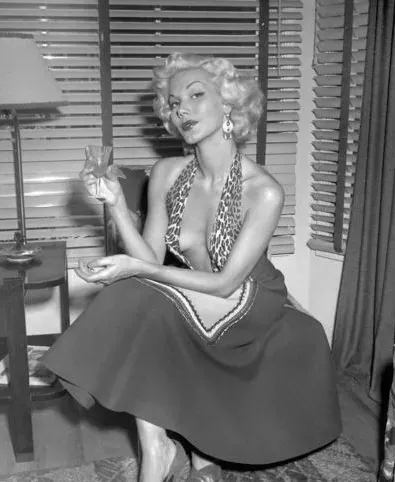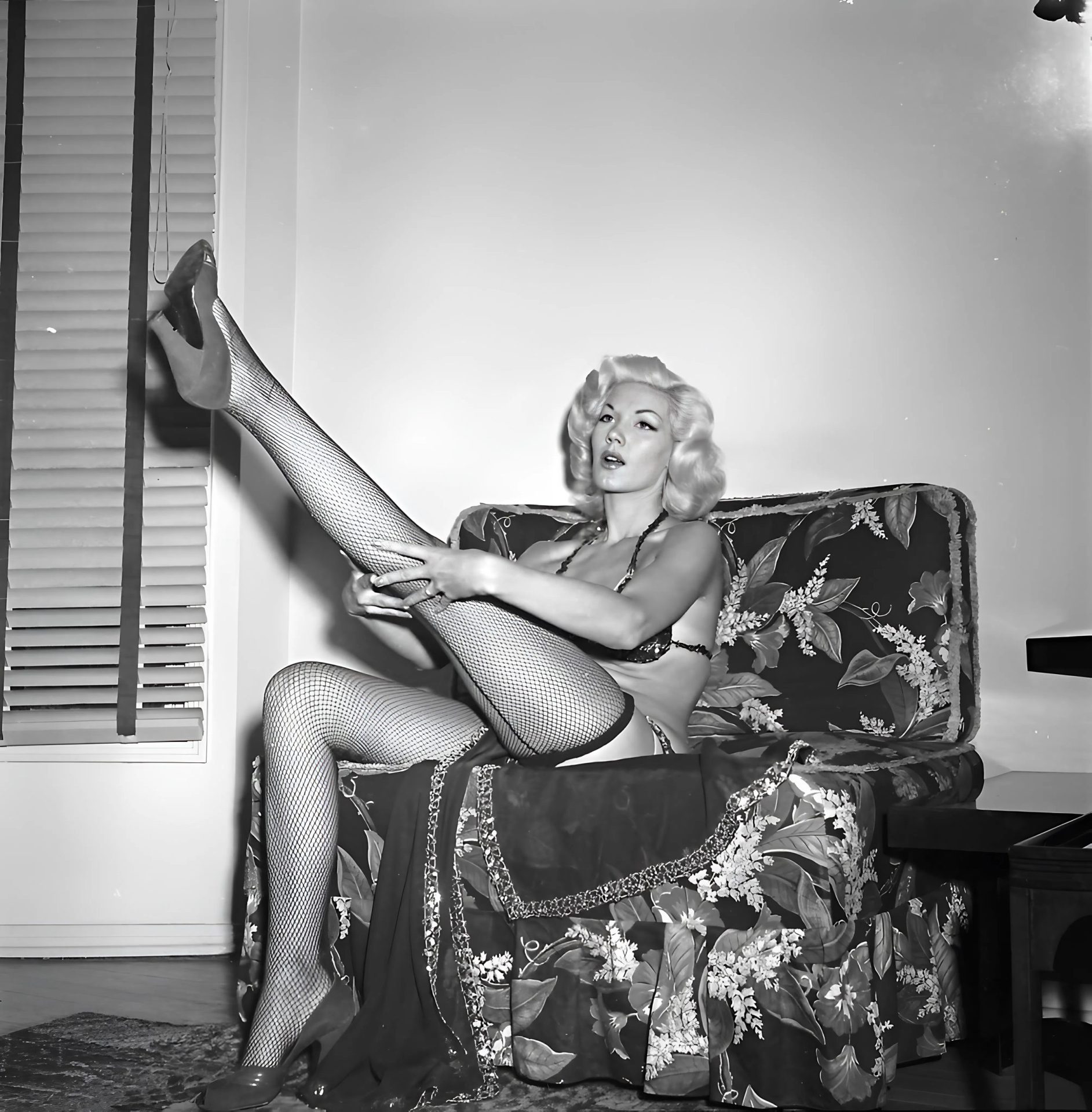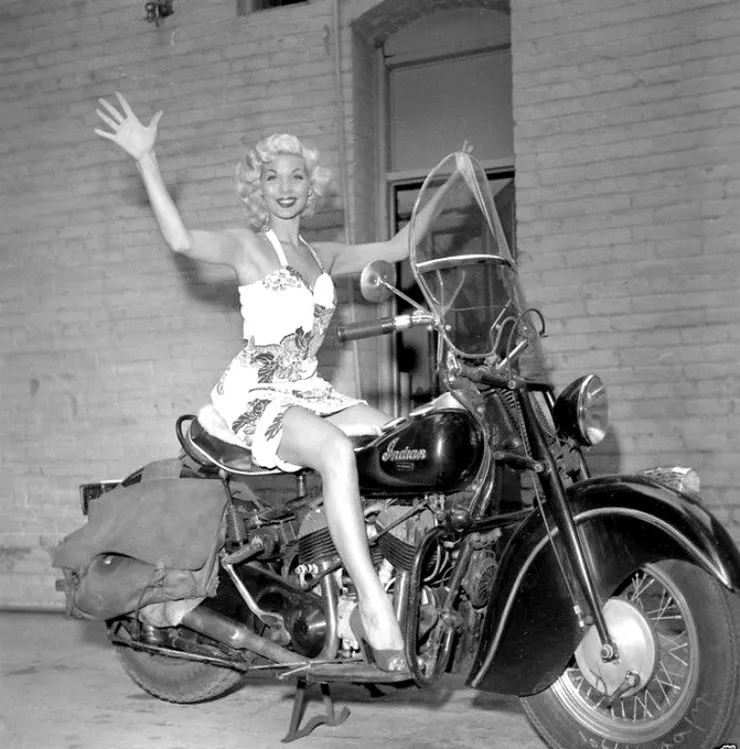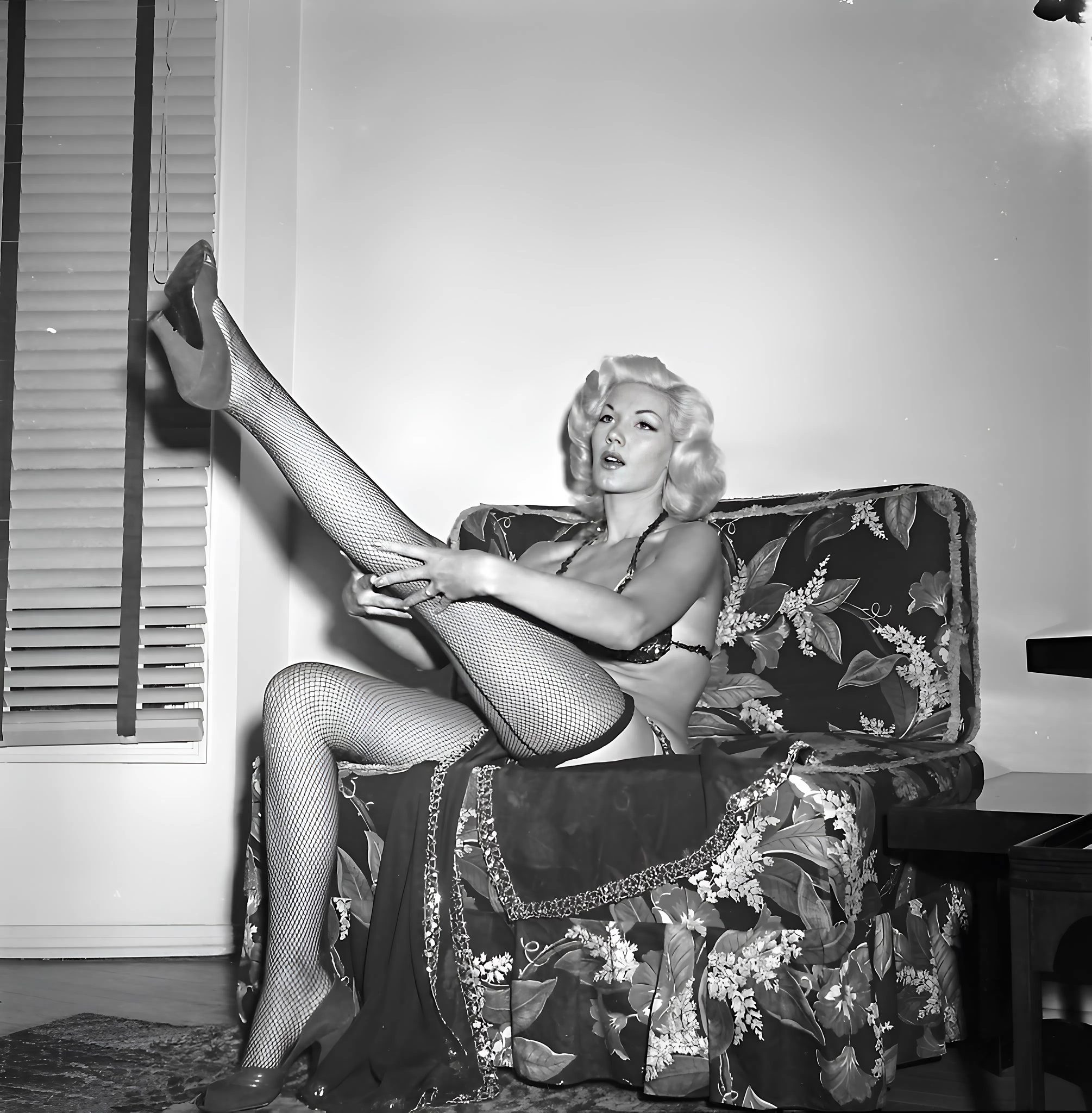Misty Ayers rose to prominence in the early 1950s as one of the leading figures of the American burlesque revival—a period that brought together traditional vaudeville, the rise of pin-up culture, and a changing entertainment industry increasingly shaped by film and photography. Although much of her personal biography remains a mystery—her birthplace, early life, and even her real name are not documented—she nevertheless left an indelible mark on mid-century performance thanks to her powerful stage presence and dynamic charisma on screen.
Her career flourished in post-World War II America, where cultural norms were tightening, yet public curiosity about sensual performances was growing. Ayers became a prominent figure in nightclubs and burlesque establishments, attracting attention with her confident performances and striking appearance. Although she may not have achieved the same level of fame as some of her contemporaries, her influence on the burlesque scene and her cinematic legacy have secured her a place in entertainment history.
Misty Ayers first gained fame through her performances in burlesque establishments and pin-up photo shoots, which often appeared in pulp magazines and local publications. These magazines celebrated beauty and glamour that were not entirely acceptable in high society, but were revered by a large and devoted audience. According to Pulp International, Ayers was ‘quite well known in her day,’ often appearing in racy magazines and concert show advertisements.
One of Ayers’ most iconic early appearances was in the 1953 documentary Night in Hollywood, which featured various burlesque performers in their element. Ayers shared the screen with stars such as Tempest Storm, and although she was not the headliner, her performance stood out for its poise and magnetic energy. The film captures her at the height of her powers, exuding confidence and sensuality without crossing the censorship boundaries of the mid-century — no small feat in that cultural climate.

After her breakthrough in Night in Hollywood, Ayers expanded her career by making short films and low-budget films that blurred the line between stage spectacle and cinema. In Tijuana Afternoon (1954) and The Goddess of Striptease (1954), she played herself, performing numbers that replicated her live burlesque acts. These performances helped cement her image as a dancer and performer attractive to the film industry.
In 1965, she returned to the screen in a more traditional acting role in the film Bad Girls Cry, where she portrayed the character ‘Sally Downs.’ This transition marked a notable shift from playing herself in documentaries to portraying fictional characters, demonstrating her adaptability and desire to evolve in the entertainment industry.
These films, while not considered mainstream blockbusters, became the foundation of an alternative film culture geared toward adult audiences in the pre-pornography era. Ayers belonged to a generation of women who carved out a place for themselves in this nascent genre, navigating the fine line between overt entertainment and outright scandal.
In the conservative 1950s, female performers were expected to walk a fine line between attractiveness and acceptability. Burlesque, with its inherent playfulness and erotic undertones, often found itself under scrutiny. Ayers thrived in this environment, demonstrating what one publication called ‘sexual daring’ without sacrificing elegance and artistry. There was nothing overtly risqué about her performances, and her level of control and grace reflected both professionalism and personal mastery.

Her dance numbers, which enthusiasts and historians describe as fluid, expressive and technically polished, transcended mere novelty. Ayers did not simply dance — she told stories through movement, costume and synchronisation. Even decades later, her authenticity is still being discussed on the internet, with people noting how her natural beauty and down-to-earth performances differ from today’s often highly stylised portrayals of female sensuality.
Although Misty Ayers never became a celebrity in the same way as mainstream film stars, she occupies a worthy place in the annals of burlesque history. Her contribution to mid-century cinema and theatre lives on in specialised archives, film databases, and blogs dedicated to burlesque and vintage Hollywood. Films such as Night in Hollywood and The Striptease Goddess remain landmarks for fans and researchers studying the era.
Her appearance in the 1965 film Bad Girls Do Cry also speaks to her staying power. More than a decade after her initial rise to fame, she was still appearing in films and winning awards — no small feat in an industry known for discarding its performers when trends change. Whether she was hired for her vintage appeal or her proven skills, Ayers demonstrated that she had more to offer than just good looks.
Today, Misty Ayers is recognised more as a cult figure than a mainstream celebrity. She embodies a lost era of performances in which teasing prevailed over candour, presence over staging, and charm over shock value. Her legacy can be found in grainy film footage, vintage posters, and the admiration of contemporary burlesque artists who cite her and her colleagues as a source of inspiration.

Although little is known about her personal life—there are no detailed records of her family, education, or relationships—only her work remains. Through her performances and screen appearances, Ayers left behind a visual and cultural legacy that continues to fascinate scholars, fans, and collectors of vintage films.
Misty Ayers’ career may have developed largely outside of Hollywood’s spotlight, but her story is symbolic of countless women in entertainment who achieved success despite limited opportunities and harsh social constraints. From sultry stage acts to roles in low-budget films, she created a body of work that continues to resonate in retrospectives of burlesque and underground cinema history.
Her ability to command the stage, capture the camera lens, and evolve with her era reveals a performer who understood not only the art of entertainment, but also the power of presence. Misty Ayers was not just a burlesque dancer — she was a symbol of resilience, reinvention, and unapologetic artistry.





















